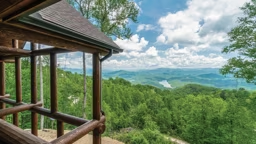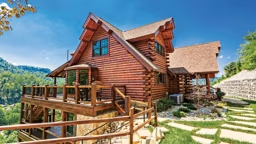The mountain waterfalls of western North Carolina have long been a soothing lure for people seeking a getaway from the trials of city life. Usually, the result is a second home that pays homage to the area’s roots in a mountain style, built with log and timber in clever ways. But travel round the bend and through the woods far enough and visitors will find a little taste of Japan. Sandy and Susi Smith’s second home will never be mistaken for any of its neighbors.
But the influence of nearby structures was never a consideration. The Smiths simply love the simplicity and elegance of Asian design, particularly the traditional single-family homes of Japan. “We had always been fascinated with Japanese architecture, back to our days as students at Stanford,” explains Sandy. “We also lived for a time in Pasadena and came to appreciate the Greene and Greene homes in southern California.” The Greene and Greene influence of the early 20th century adapted the Mission style to Arts & Crafts and Asian lines in a series of large homes that enchant even today. In fact, the influence has grown considerably in the past decade or so, with a streamlined, angular look that speaks to clean minimalism. It’s a design for these times. For the Smiths, this is also a time in which Sandy’s career as attorney for an Atlanta firm meant the need for down time and a restful getaway destination. The mountains were a reasonably accessible drive and near a boarding school for which Sandy serves on the board of trustees. Since most of Japan is also mountainous terrain, the home design reflects that understanding of the setting, utilizing vertical space as efficiently as horizontal. Sandy had done a considerable amount of research prior to starting the project and he involved a number of resources to bring his vision to fruition.
The original design floor plan and notes for a one-story, four-bedroom floor plan with a relatively small living room and kitchen was submitted to MossCreek Designs, who had already created a wealth of elegant mountain-style homes in western North Carolina. Within the context of a narrow setting, the challenge was to fit a comfortable design, and it quickly became clear that a fresh approach utilizing vertical space would be wiser. And it was the homeowner, as much as anyone, who recognized that. “This design is at least 75% Sandy’s ideas and thoughts,” says MossCreek President Allen Halcomb. “He came to us with a vision and we helped interpret that, along with providing the needed technical expertise. We also helped him with living space sizing and to think through all aspects of the 4,300-square-foot home from a logical standpoint. That wasn’t difficult with Sandy — he had been significantly influenced by the logic of the Japanese approach to home design.” “Allen was very patient with us,” Sandy continues. “We had a lot of design interpretations going back and forth for about a month, but we arrived at the final plan of two bedrooms upstairs along with a very generous living, dining, and kitchen areas that could be open space.
The lower level allows us to have three additional bedrooms, a separate kitchen, living room and the laundry area. By expanding the space in this manner, we were able the last Independence Day holiday to have four brothers and sisters — and their spouses and children, 27 people in all — stay at the same time and the adults had their own individual sleeping spaces.” To provide a significant portion of the materials, Sandy located Oregon Timberworks, which already had a comfort zone in working with Asian-influenced design. Even though the business supplies primarily to the West Coast and mountain regions, providing wood for this project got the quality and character for which Sandy was looking. In this design, sugizai (cedar wood) and garasu (glass panes) would create more than just a framework — these would be the elements that defined the home. “Cedar is revered in Japan,” Halcomb says, “and it has always been appreciated in the Appalachians, too, so this actually became a marriage of cultures in its own way.”
The vertical supports of the home are round logs hand-hewn from Canadian Douglas fir for structural integrity, but the horizontal wood in the home is crafted from cedar timber and the interior walls are off-set from the framing, much as one would find in a traditional Japanese home.
Much more about this home ran in the Summer 2008 issue of Custom Wood Homes magazine.




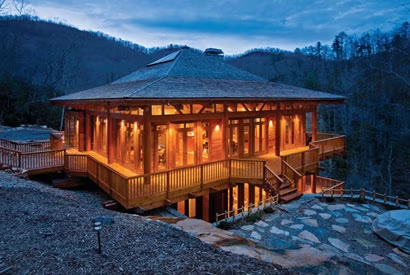
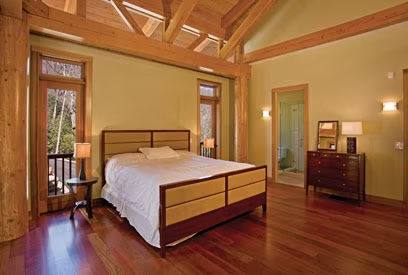
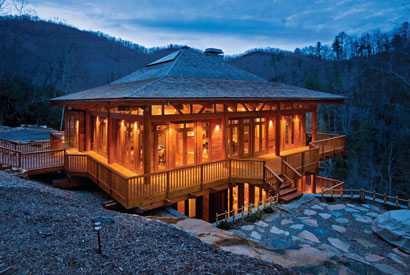





_11868_2022-11-04_11-41-256x288.avif)
